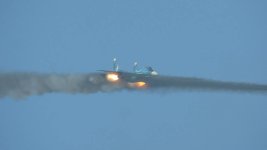[🇪🇬] From Rivalry to Cooperation: The Geopolitical Implications of Egypt-Turkey Rapprochement
- By Egyptian
- Egypt Defense Forum
- 1 Replies
Turkey and Egypt’s recent rapprochement comes after years of tension, sparked off by the ousting of the Egyptian President Mohammed Morsi in 2013. Bilateral political and diplomatic strains until now have limited Ankara and Cairo’s collaboration on regional crises across Africa and the Eastern Mediterranean in which both have interests at stake. Now, however, with Egypt and Turkey taking strides to repair their relations, the gates are open for cooperation on new strategies tackling enduring crises. Still, regional rivalries, conflicting loyalties, and external actors may complicate cooperation on critical matters like energy resources and tension in the Horn of Africa. What will the Cairo-Ankara thaw mean at the geopolitical level, and how will it affect regional crises in Africa and the Eastern Mediterranean?
This set of essays, edited by the ISPI and Atlantic Council’s North Africa Program, seeks to address these challenges and possibilities while also offering concrete recommendations during this period of tremendous change. @LegionnairE @Lulldapull












